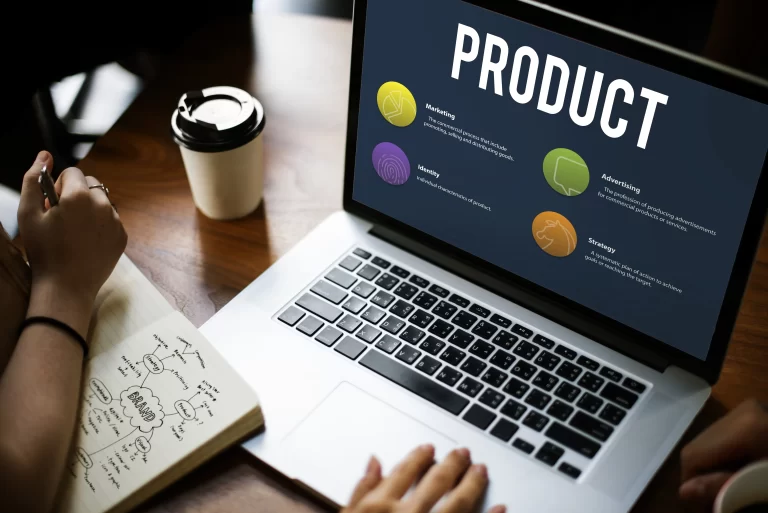Amazon FBA Product Research: The Ultimate Step-by-Step Guide
Amazon FBA Product Research
The Ultimate Step-by-Step Guide
Starting an Amazon FBA (Fulfillment by Amazon) business? The most crucial step is selecting the right product. Many sellers fail simply because they don’t conduct proper product research and enter highly competitive or low-profit markets.
Did you know?
Over 59% of Amazon sellers become profitable within their first year, but those who skip product research often struggle to make sales.
Without thorough research, you risk investing in a saturated market with low-profit margins. To help you make smart, data-driven decisions, here’s a step-by-step guide on how to find the perfect Amazon FBA product Research.
What is Amazon FBA Product Research?
Amazon product research is the process of identifying high-demand, low-competition products that can generate consistent profits on Amazon.
Why is product research important?
✔ One way to Ensure high sales potential
✔ Another strategy is to help avoid oversaturated markets
✔ Also consider Increases in profitability & long-term growth
✔ Prevents investment losses
Many new sellers make the mistake of choosing products based on “gut feeling.” However successful Amazon sellers use data-driven strategies and research tools to validate product opportunities.
Pro Tip: Never rely on personal preferences—use real data to make decisions!
4 Key Factors for Selecting a Winning Amazon FBA Product
To find a profitable Amazon product, focus on these four essential criteria
Demand – Is There a Market for This Product?
✔ High demand = More sales & higher revenue.
✔ To begin with, check if a product gets at least 300-350 monthly sales
✔ Look for trending products with consistent growth over time.
Example:
Good choice: Reusable water bottles (high demand, steady trend).
Bad choice: Fidget spinners (short-term trend, declining demand).
Customer Behavior – Are Buyers Interested?
✔ Check Amazon reviews to see how customers feel about similar products.
✔ Look for negative reviews—can you improve the product to stand out?
✔ Analyze Frequently Bought Together items to find upselling opportunities.
Example:
If a customer buys a coffee mug, they may also buy a mug warmer—offering them as a bundle can increase sales!
Competition – Can You Stand Out in the Market?
✔ Avoid oversaturated markets with too many competitors.
✔ Look for low-competition products that still have high demand.
✔ Stay away from markets dominated by big brands (Apple, Nike, Samsung).
Pro Tip: If many sellers are offering the same product at the same price, it’s difficult to stand out. Instead, choose unique variations or product bundles to create a competitive edge.
Example:
Bad choice: Selling a standard yoga mat (high competition).
Good choice: Selling a yoga mat + resistance bands + carrying bag (higher value, less competition).
Profitability – Will You Actually Make Money?
✔ Target products priced between $20-$50 (best for impulse buying).
✔ Choose small & lightweight items to reduce shipping & storage costs.
✔ Aim for a 25-35% profit margin (after Amazon fees & shipping).
✔ Avoid fragile or oversized items (higher return rates & shipping costs).
Example:
Bad choice: Glassware (fragile, high shipping cost).
Good choice: Phone cases (lightweight, high demand, good profit margin).
Pro Tip: A product that costs $10 to manufacture can often be sold for $50+ with strong branding & marketing!
Best Amazon FBA Product Research Tools
To make data-driven decisions, use these powerful tools:
✔ Helium 10 – Find high-demand, low-competition products.
✔ Jungle Scout – Analyze sales volume & competition.
✔ AMZScout – Identify trending products before they go mainstream.
✔ Google Trends – Check if demand is increasing or declining.
✔ Keepa & CamelCamelCamel – Track price history & Amazon sales trends.
Pro Tip: Never invest in a product without checking demand, competition, and profitability first!
Top Amazon FBA Niches in 2024 (Best-Selling Categories)
Not sure which niche to enter? Here are some high-profit product categories:
Home & Kitchen – Storage organizers, kitchen gadgets, air fryers
Health & Wellness – Resistance bands, posture correctors, massage tools
Pet Supplies – Grooming kits, chew toys, pet beds
Tech Accessories – Wireless chargers, ergonomic keyboards, screen protectors
Eco-Friendly Products – Reusable straws, bamboo toothbrushes, sustainable packaging
Pro Tip: The best products solve a problem or improve convenience.
Amazon FBA Product Research: Step-by-Step Checklist
🔲 Step 1: Use Helium 10 or Jungle Scout to check demand.
🔲 Step 2: Analyze customer reviews & identify product improvements.
🔲 Step 3: Check competition level – avoid saturated markets.
🔲 Step 4: Validate profitability (ensure at least 25% margin).
🔲 Step 5: Track seasonal trends using Google Trends & Keepa.
🔲 Step 6: Compare supplier costs on Alibaba or 1688.com.
🔲 Step 7: Create a test batch before scaling production.
Pro Tip: Always start with a small order to test demand before investing heavily!
Conclusion: Ready to Launch Your First Profitable Amazon FBA Product?
Starting an Amazon FBA business can be life-changing, but choosing the wrong product can lead to losses & frustration.
✔ Use data-driven research (not guesswork) to find profitable products.
✔ Target high-demand, low-competition niches for faster success.
✔ Leverage the right Amazon FBA tools to analyze trends.
✔ Focus on profitability—small mistakes in pricing can eat into your margins!
Your Next Steps:
Research 5 potential products using Helium 10 or Jungle Scout.
Analyze demand, competition & profitability before making a decision.
Start with a test batch & scale once you validate sales.
Want expert tips on launching your first Amazon FBA product?
Drop your questions in the comments or subscribe to our newsletter for exclusive insights!
Your Amazon FBA journey starts today—are you ready?


Привет сторонникам перемен и роста!
Попробуйте ChatGPT для нешаблонных задач: составьте план стартапа, анализируйте договор или улучшите программу. ChatGPT для учащихся — структурированные заметки, подготовка к экзаменам. ChatGPT домашних задач — подберите рецепты, придумайте поздравление. ИИ работает на вас — просто и мощно!
Перейти на сайт – https://yarchatgpt.ru
chatgpt free github
Экспериментируйте — в этом сила роста!
1
555
555
555
555
OomB1A48
1*555
(1015-455-5)
555*868*863*0
1′”